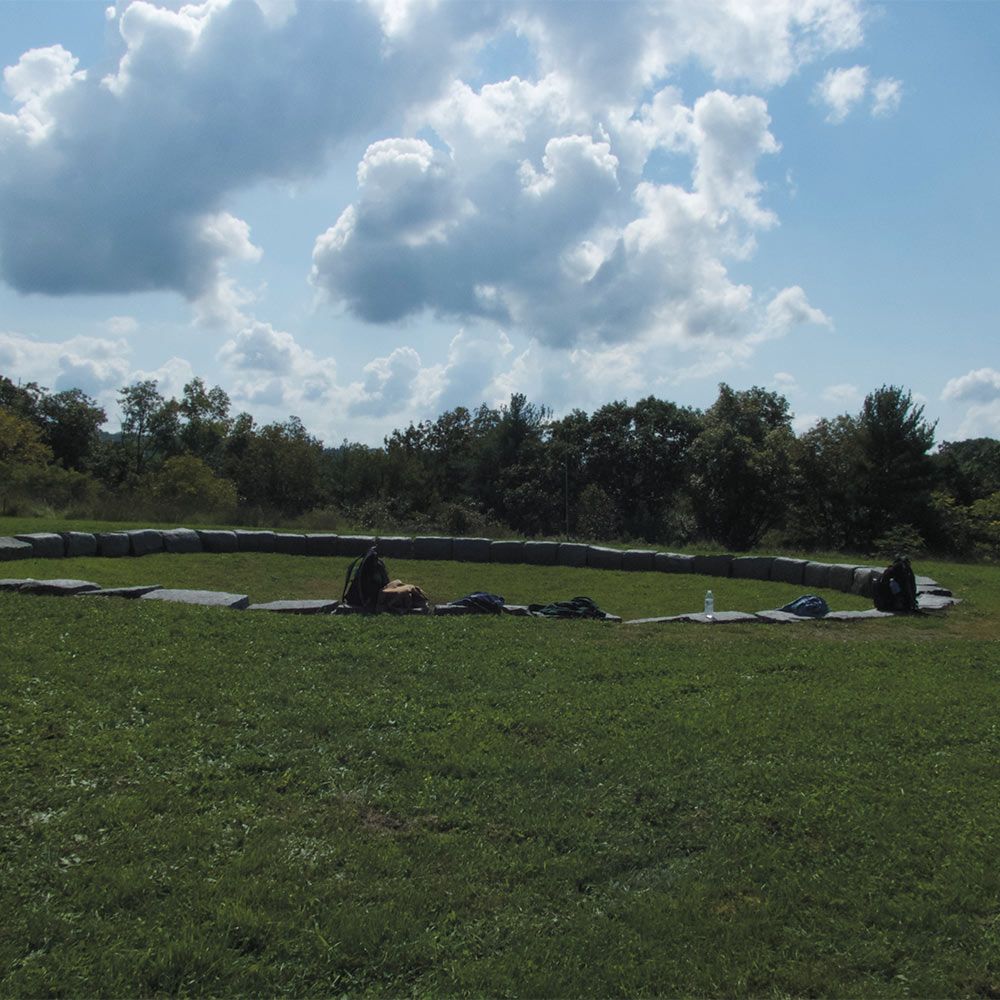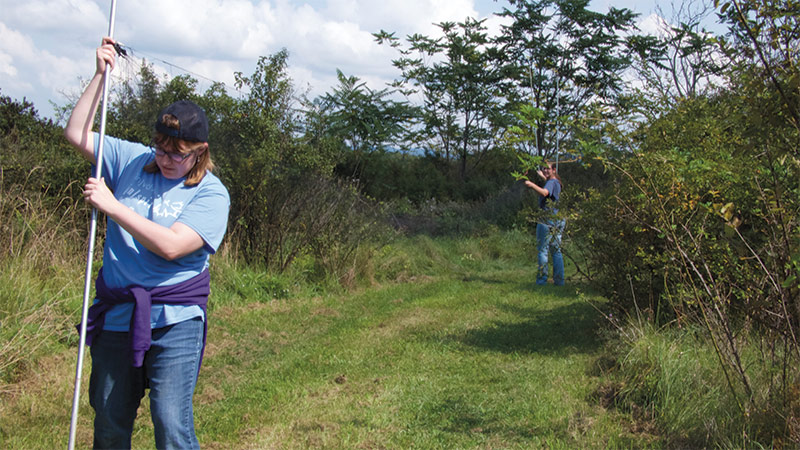During the bioblitz, biology and environmental science faculty and alumni served as experts, leading surveys of moths, invertebrates, plants, mammals, herpetofauna (reptiles and amphibians), and birds. Travis Russell ’13 led the bird and herpetofauna surveys, Taylor Clark ’17 served as an expert for the bird surveys, and Paul Dennehy ’10 served as a moth expert.
“I loved that we were collecting and observing species with alumni who are professionals in these wildlife fields. They had so much valuable information to contribute.”Annemarie Sciarra ’19, Swarthmore, Pa.
“It was awesome to see alumni come back to help out and be so engaged in the bioblitz,” says Shannan Davidow ’18, who helped facilitate the event for her capstone project.
Annemarie Sciarra ’19, who served as a volunteer at the event, says, “I loved that we were collecting and observing species with alumni who are professionals in these wildlife fields. They had so much valuable information to contribute.”
The event also included an education tent where experts offered educational sessions for community members and their children about the wildlife groups they were surveying.
By the end of the assessment, experts and volunteers produced a total of 664 observations at the bioblitz. This included 23 species of birds, two species of reptiles, eight species of amphibians, 46 species of insects, and 130 unique species of plants. Of the species documented, 70.8 percent were native species.
“If you really want to protect the environment, you need to understand the role all of the species play and their interrelatedness,” says Uma Ramakrishnan, professor of environmental science and studies, who co-organized the event.
Ramakrishnan worked with Alexander Bischer ’17 and Emma Johnson ’17 as they planned the bioblitz event last spring for their senior capstone project. This fall, Davidow took the reins, working with middle- and high-school teachers in the area to invite students and their families to the event. The team designed the event to include more than 100 community members.
“You hear about the National Park Service doing events like this because it’s a good experience for the environment and a cool way to get the community involved,” says Davidow. “I think this project will help me stand out to organizations when I’m applying for a job. Planning an event like this will show I have organizational skills, networking expertise, and experience working a lot of data—data that I’ve actually collected.”
The Juniata team who hosted the event hopes it will become an annual tradition.









